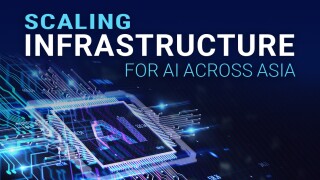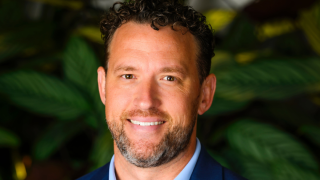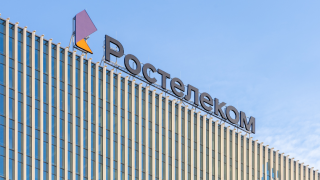On the surface, not much connects the power generation and data centre industries aside from the actual cables between their respective sites.
One is a national, decades-old utility that operates within the constraints of heavy regulation and giant project lead times. The other is fast-paced, agile, and one of the most attractive industries around right now in terms of investment flows. Two different operational styles, two different working cultures, two different sets of time horizons – about as varied as they come.
But these two industries are about to get to know each other much better. With unprecedented demand for digital infrastructure, there is a real risk that a lack of available, transmissible and affordable power could bring data centre buildout, and the investment making it happen, to a premature halt – as we have seen in recent years Singapore, Ireland, and Amsterdam among others.
Want to join the data centre energy discussion?
Dawn Childs is on the Advisory Board of the the Datacloud Energy & ESG event in Brussels - the first event to unite data centre operators and energy innovators.
This means it’s more important than ever for people in the energy and data centre worlds to work together to ensure power supply solutions that work for both parties and for society in general – and Dame Dawn Childs, with her experience in both sectors, is uniquely qualified to offer insight into how this can be done.
“The biggest difference between the two sectors is strategic speed,” says Childs, who was UK Change Director at National Grid, the UK’s state-owned electricity infrastructure operator, before taking up her current position as CEO of Pure Data Centres. “One reason for this is that the power sector is heavily regulated, which slows delivery timelines to five or even ten years. The data centre sector is not regulated in the same way.
“Build-out of digital infrastructure needs to happen at a much faster pace — it can be under two years, and for the AI centres being planned, three to four years is a long time horizon. It's also far more agile in terms of the amount of infrastructure required to reach a critical mass in any one location.”
According to Childs, part of the solution lies in meeting halfway. “Big tech needs to think beyond their typical two-to-five-year planning cycles. But utility suppliers also need to reduce their time horizons and think less along the lines of designing an entire grid network from scratch, which is their starting point (for grid architecture),” she says.
By focusing on smaller, distributed solutions rather than attempting to overhaul entire grid networks at once, Childs believes, utilities could work incrementally and align more closely with the agility of data centre development. This would also allow data centres to shift from being perceived as part of the problem to becoming part of the solution.

But shifting the culture of one company is difficult enough – never mind that of an entire industry. Could regionalisation of power generation be a simpler answer? Childs points to the potential of co-locating data centres in areas with abundant energy sources. “If you’ve got a region investing heavily in renewables, it makes sense to align energy demand with that supply,” she says.
This trend of “chasing power” is already emerging, particularly in the US, where data centres are being built near nuclear facilities or in areas known to have more power than the average – Texas being one example. This approach, Childs believes, should be expanded globally.
Scotland’s abundant renewable power is an example how this could work for the UK. However, achieving this would require shifting the energy sector’s mindset to think regionally first and then scale up nationally. This is the reverse of the traditional grid setup, where power is planned nationally and then sent across the grid to the places that need it.
That being said, Childs also cautions against the misconception that data centres can immediately transition to entirely sustainable power sources. “There’s no short-term pathway to 100% renewable energy without some reliance on base-load solutions like gas or nuclear,” she explains.
And even if they could, grids are nationwide and electricity is a universal commodity – so if a data centre hoovers up all the renewable power and leaves consumers running gas boilers and using non-renewable energy, is that really bringing any benefit? “Let's not fool ourselves – gas is part of the transition. What we need to do is work together with the grid providers to get the green transition quickest as a society.”
Does this reframe the sustainability discussion? “Data centres paying for renewables to be built via PPAs (power purchase agreements) are enabling the green transition, not stopping it. The average consumer could never afford to do that.”
Childs’s tenure at Pure Data Centres is the most recent chapter in a truly remarkable career. A qualified mechanical engineer, she spent 23 years in the Royal Air Force, becoming the first woman to hold many of her positions, and then became the first female Head of Engineering at a major international airport after moving to work for the UK’s Gatwick Airport.
In between her aviation work and her time in energy and data centres, Childs also established and oversaw a central engineering function at Merlin Entertaiments, the operator of the largest theme park in Britain, Alton Towers.
On the surface, it is hard to see the links. But as probably the only person with experience in military, civil aviation, power, theme parks and data centres, Childs explains the common thread and how she was able to adapt to the shifts in sector.
“I had a little rule – the moves weren’t all completely mad. There needed to be at least one thing that had some connection, and it was generally engineering management. My basic engineering principles and leadership of people was core to it all,” she said.
What was the hardest move in terms of adapting? “Military to civilian was a massive change, really scary. But from an industry perspective, the biggest difference was going into the theme park sector, because nothing I engineered there was anything like what I had engineered before.”
Beyond her technical expertise, Childs is a passionate advocate for diversity in STEM, and has received multiple awards for her work, in particular bringing more girls into engineering. Over the years, she has witnessed progress, with women in UK engineering increasing from 7% in the 1980s to over 16% by the early 2020s. Yet, challenges remain.
“The post-COVID landscape has been tough, and we’re seeing some regression,” she notes. Retaining talent is just as critical as attracting it, and inclusion plays a pivotal role. “Companies need to tailor flexibility to individual roles and circumstances rather than enforcing one-size-fits-all policies,” she argues.
Given the well-publicised talent problem for data centres, what advice would someone with such a varied career give to someone looking to shift into data centres from a different field? “Don’t let fear stop you. Whenever I have changed career, I’ve had to get to the point where I was disappointed in my progress and come to some sort of ceiling, and at that point I have looked for something else. My time in the Air Force was fantastic, but I could probably have seen the lack of progress coming a year or so earlier.”
Capacity was talking to Childs ahead of her appearance at the Datacloud Energy & ESG event in Brussel - an event specifically designed to bring the data centre and power worlds together - where she is also sitting on the advisory board. What is she expecting to hear most about? "The big thing I expect to hear about is that there's not enough power available on the right basis. But what I hope to hear is that how by having this kind of co-located conference, we can find a way for the data centre sector to enable the green transition rather than being the problem that's preventing the green transition."
Having the required perspective to bring two such varied industries together is a very tough ask, and Dame Dawn’s multifaceted career is an advantage in helping Pure Data Centres solve its own power challenges.
And with the worlds of power and data drawing closer together, it is vital the two sectors speak the same language. Dame Dawn’s experience shows the importance of collaboration, mutual understanding, rethinking work philosophies where possible – and most importantly of all, trying to meet somewhere in the middle.
Dame Dawn Childs will speak at the inaugural Datacloud Energy & ESG event in Brussels, which is dedicated to helping the power and digital infrastructure sectors discuss their common challenges together. You can register for the event here!
RELATED STORIES
Grid constraints risk delaying data centre growth: report
AI boom could leave 40% of data centres power-starved by 2027: Gartner






